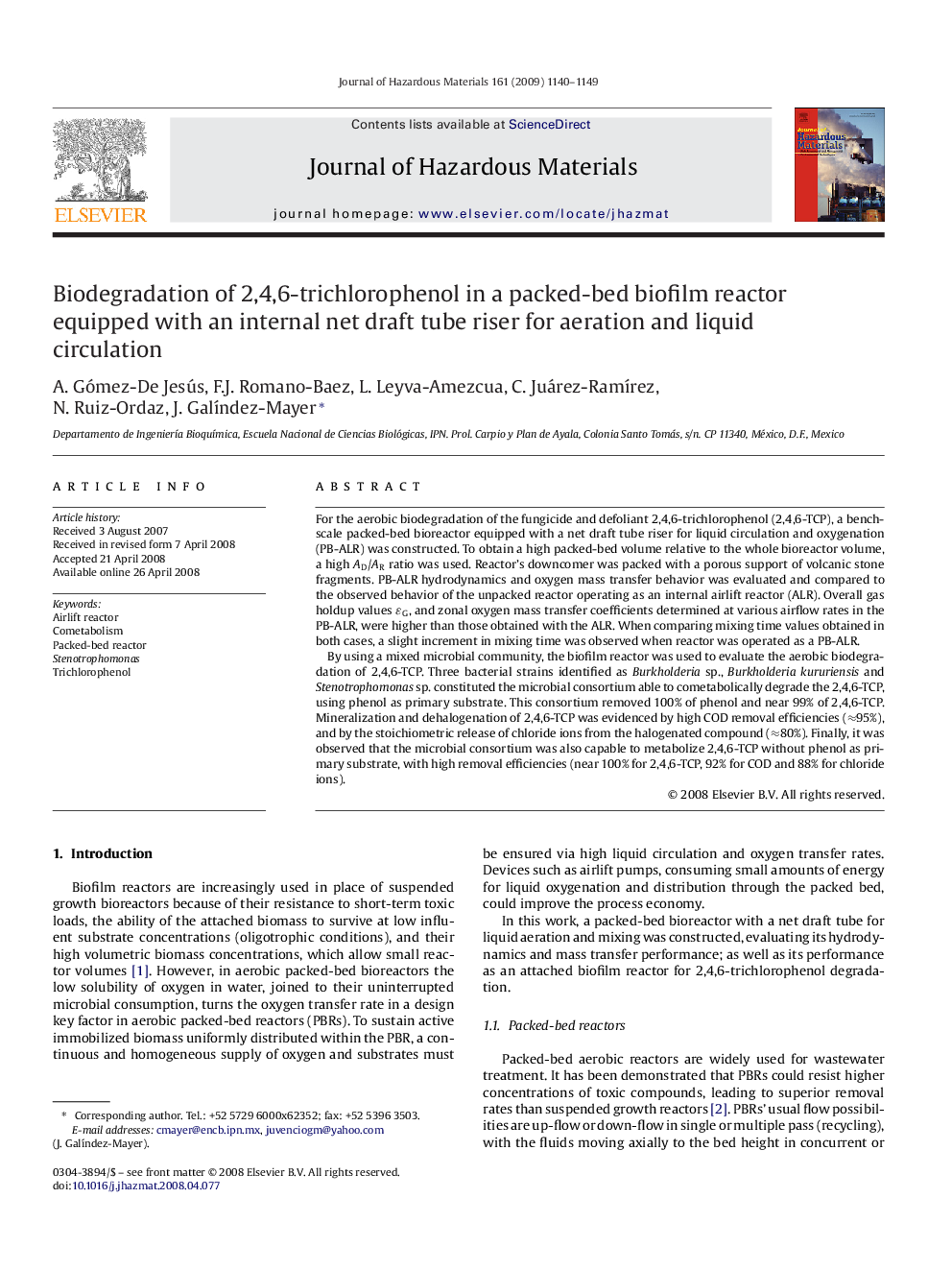| Article ID | Journal | Published Year | Pages | File Type |
|---|---|---|---|---|
| 582685 | Journal of Hazardous Materials | 2009 | 10 Pages |
Abstract
By using a mixed microbial community, the biofilm reactor was used to evaluate the aerobic biodegradation of 2,4,6-TCP. Three bacterial strains identified as Burkholderia sp., Burkholderia kururiensis and Stenotrophomonas sp. constituted the microbial consortium able to cometabolically degrade the 2,4,6-TCP, using phenol as primary substrate. This consortium removed 100% of phenol and near 99% of 2,4,6-TCP. Mineralization and dehalogenation of 2,4,6-TCP was evidenced by high COD removal efficiencies (â95%), and by the stoichiometric release of chloride ions from the halogenated compound (â80%). Finally, it was observed that the microbial consortium was also capable to metabolize 2,4,6-TCP without phenol as primary substrate, with high removal efficiencies (near 100% for 2,4,6-TCP, 92% for COD and 88% for chloride ions).
Related Topics
Physical Sciences and Engineering
Chemical Engineering
Chemical Health and Safety
Authors
A. Gómez-De Jesús, F.J. Romano-Baez, L. Leyva-Amezcua, C. Juárez-RamÃrez, N. Ruiz-Ordaz, J. GalÃndez-Mayer,
